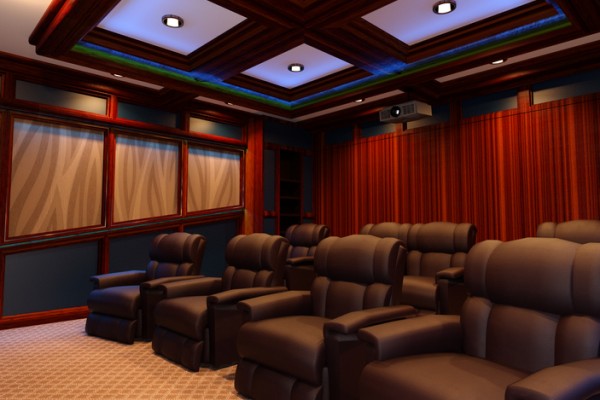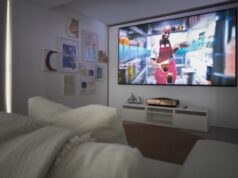
A home theatre isn’t just about screens and sound—it’s about the experience. And nothing defines that experience more than the seating. From recliners to tiered platforms, getting it right can take your home theatre from average to unforgettable.
Here’s what you need to know when choosing home theatre seating.
Comfort is king
At the heart of any good home theatre is comfort. Whether you’re watching a quick episode or settling in for a three-hour blockbuster, your seating needs to support you in all the right ways.
Look for seats with:
- High backrests for neck and shoulder support
- Wide armrests, ideally with cupholders or storage
- Reclining mechanisms, especially electric recliners for ease
- Durable upholstery that breathes (like leather or performance fabric)
If you’re converting a space like a basement or spare room, be sure to insulate properly. Soundproofing techniques like room within a room (RAWR) paired with insulated plasterboard walls can help create a comfortable, quiet environment, which enhances the overall viewing experience.
Layout and spacing
The layout of your home theatre should suit the room’s size and shape. Avoid cramming too many seats into a small area. Everyone should have a clear, centred view of the screen without craning their necks or leaning sideways.
As a rule of thumb:
- Leave at least 500–600mm between rows for legroom and walkways
- Allow around 1,000mm behind recliners to ensure full extension
- Keep a distance of 2–3 times the screen height between the viewer and the screen
Tiered seating platforms can help maintain clear sightlines in multi-row setups. If you’re building new, consider these during your floor planning stage. For renos, raised timber platforms can be retrofitted.
Seating styles
There are several styles of home theatre seating to choose from:
- Recliners: The classic cinema-style chair. Choose electric models for smooth operation.
- Cinema lounges: These larger lounges accommodate multiple people, making them great for families.
- Modular sofas: Offer flexibility. You can rearrange sections or add seats later.
- Loveseats or double chairs: Perfect for couples or smaller spaces.
Many renovators also repurpose traditional lounge room furniture, but be cautious—standard couches may not provide the same level of back and neck support required for long sessions.
Materials and finishes
Upholstery plays a big role in comfort, durability and acoustics.
- Leather: Easy to clean, stylish and long-lasting, but can feel hot in summer.
- Fabric: Softer and more breathable, but more prone to stains.
- Performance materials: Designed to be spill-resistant and pet/kid-friendly.
Your choice here can also affect how sound behaves in the room. Soft furnishings absorb more sound, which can help reduce echo. For best results, pair with acoustic insulation in the walls and ceiling.
Smart features and extras
Today’s home theatre seats can come with more bells and whistles than ever:
- USB charging ports
- Fold-down tables
- Storage compartments
- LED base lighting
- Massage and heating options
Think about how you’ll use the space. Will it double as a gaming room or kids’ hangout? Choose features that match your lifestyle and avoid overcomplicating the space if it’s primarily for movies.
Final touches
Once your seating is in place, complete the space with:
- Soft rugs or carpet for sound absorption and comfort
- Block-out curtains or window coverings to reduce light glare
- Smart lighting controls to dim lights without leaving your seat
Your seating isn’t just a piece of furniture—it’s a core part of your home theatre experience. Prioritise comfort, layout and acoustic performance to get the most out of your setup.





